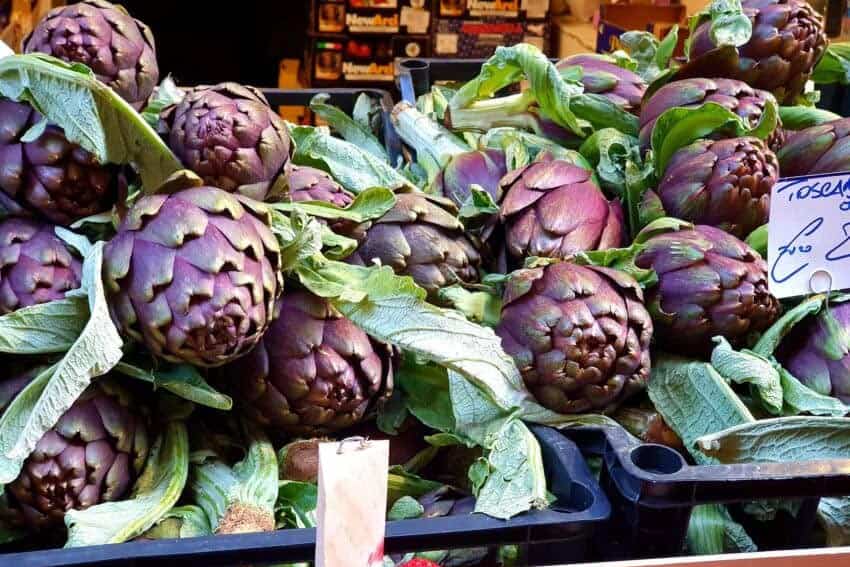By David Rich
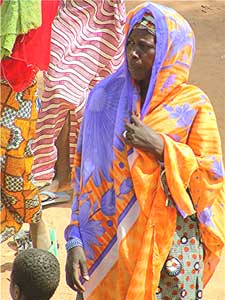
There are places you always want to go back to, that were so dang good you couldn’t get enough; Mali is at the top of my list.
In a Word, Color
The single key word is color; sheer unadulterated cacophonies of vividness to put Sherwin Williams to shame. Color pervades Mali, from the ancient market at D’Jenne to the sheer escarpments of Dogon country, and all the way up the legendary Niger River to over-fabled Timbuktu.
The clamorous D’Jenne market has exploded weekly for 800 years without interruption, founded by caravans toting raw salt across the Sahara and gold from the mines of Bitou (now in Côte d’Ivoire).
It is easily the world’s most colorful market, overshadowing the flashy Vietnamese tribal markets at Sapa and Bac Ha, the brilliance of ethnic Chinese markets around Dali and Lijiang, and the Peruvian Indian and Thai tribal offerings.
Not only are D’Jenne market ladies, and even the gents, dressed in every color from chirping canary yellow to shimmering aquamarine teal, brightly patterned purples, orange sherbet drenched with blueberries, and red stripes, but these colors only enumerate those worn by the first market lady I saw.
World’s Largest Mud Mosque
D’Jenne is a tiny burg stuck on an island in the middle of a Niger meander 220 miles (350 km) southwest of Timbuktu. This premier World Heritage site boasts the world’s largest mud mosque, a fairytale apparition spiked with poles for climbing while dabbing on each year’s fresh coat of mud.
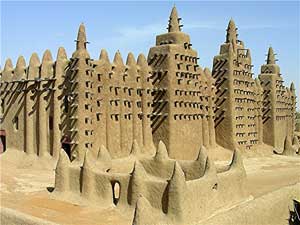
Every Monday the spiky, pokey, poley sprawl of the mosque is surrounded by the psychedelic market with offerings from piping hot baguettes and bleating goats, to enormous calabashes, fragrant spices, and an immodest rainbow of fabric, a cacophonous display of raw capitalism.
The mosque is palisaded by mud houses adorned with an array of metal knick-knacks complemented by uniquely carved doors and shutters.
Top Ten
Dogon country is one of the top ten places to see before you kick the bucket. The Dogon is overhung by 25 miles (40 km) of a several hundred meter (yard) high escarpment, sheer red cliffs pocked with cliff dwellings built by small red Tellem pygmies in the mists of the distant past, a people reputed to fly in order to access their sheerly-situated abodes.
The ancient Tellem villages are reminiscent of Mesa Verde in Colorado, and are now used as vertical cemeteries by the Dogon people, who were first happened upon by Westerners in 1931.

Naturally the Dogons wish to preserve the fertile river-bottom for agriculture, to avoid besmirching it with the unproductive graves of late and later ancestors.
The Dogons pursue a complex animist religion generating diverse artistry, intricate sacred dances, and incredible ceremonial masks. The Dog Star, Sirius, is at the center of their worship, in Dogon mythology characterized as two visible stars and one invisible star. The invisible star remained undiscovered by Western radio telescopes until 1995.
Mask Dances
The villages offer ancient and sparkling new mud mosques, waterfalls, views over orange plains, crocodile pools, fanciful pottery, cylindrical Tellem granaries, rooftop beds under a trillion billion stars including the Sirius-three, and picturesque thatched huts on wooden rollers below overhanging cliffs.

The highlight of a Dogon country trek, for indeed you must hike down the escarpment and in, is the costumed mask dances.
One intricately tapered box-head was ten meters (yards) tall, another projected a meter-high wooden bird, others with black-beaded headgear, double-black and white crosses, masks of shells, horned orange boxes, meter-high black statutes sprouting red scepters, pronghorns, and lastly, mop-head Mohawk-arrayed dancers on six-foot (two-meter) striped stilts.
The tourist dances are attended by local women and children who, along with tourists, are prohibited from witnessing the rarified real thing.
Cruising the Niger
Cruise up the mighty shallow Niger to Timbuktu, avoiding one of the roughest hundred plus miles (180 kilometers) of corduroyed road on earth, where on the way back I met a saucer-eyed ten year old who’d never before seen a white person.
At least there are choices to get to Timbuktu from the south, whether by river, road or plane; proceeding further north the only option is 52 days on a camel across the Sahara to Zagora, Morocco.
The direction of the Niger, subject of European speculation for a century, was finally settled by Scotman Mungo Park, who still never knew it rose 120 miles (200 kilometers) from the Atlantic in the Guinea highlands and emptied 2600 miles (4100 kilometers) later into a Nigerian delta lately menaced by share-the-oil-wealth kidnappings.
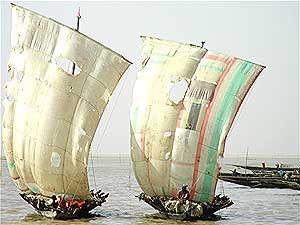
Niger River traffic consists of pirogues and overstuffed boats painted in prisms, draped with brightly-turbaned Taureg men with matching robes, and lustrously attired women.
Three-Day Putter
On the three-day putter up the Niger from Mopti to Timbuktu all boats cross West Africa’s largest manmade lake, shallow and difficult to navigate Lake Debo where fishermen stand in thigh-deep water and cast circular nets that descend like shiny rainbows in the setting sun.
Timbuktu remains a dinkerville of 33,000 people crammed with oily merchants who constitute the most accomplished shysters on the planet,; their bargaining experiences dating to the 11th century. They vend uniformly over-priced wares from Taureg silver jewelry to turquoise leather purses, patient to bargain the average tourist into a blithering heap of frustration.
Timbuktu
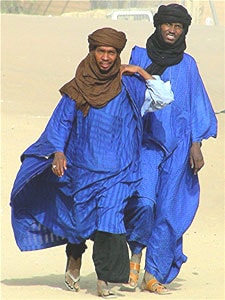
Timbuktu hasn’t changed much since it was chronicled by Leo Africanus in 1494, sporting the same three decrepit mud mosques at the top of the Niger bend, where the massive river is shoved south by the implacable Sahara.
City streets remain sifting sand, up to a foot deep, forming a dusty, hot town exacerbated by uppity-spitting camels galore.
My first brush with a Timbuktu merchant came wrapped in a Persian blue turban with matching robe, representing himself as a veteran Saharan camel-caravanner and salt trader, whipping out grossly overpriced Taureg silver.
Then his cell phone rang and I was mercifully able to escape down the dune of a street to the Timbuktu Lyceum/high school’s computer lab, checking my email amidst an array of flat-screened monitors.
Perhaps Timbuktu has changed a tad since the days of Leo Africanus, but you should go anyway if only to help poor beleaguered tourists wear out obnoxious Timbuktu merchants. Good golly I miss Mali, anyway.
Mali Photo Gallery
Photographs by David Rich
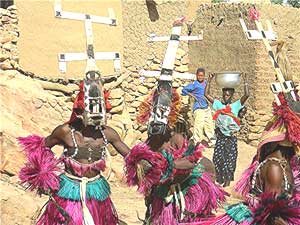
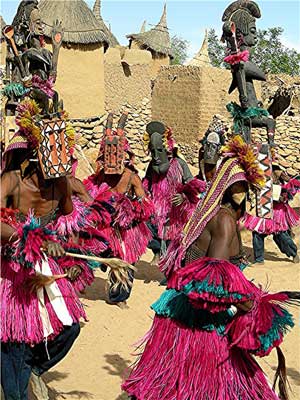


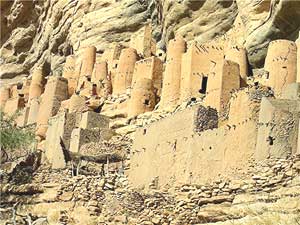

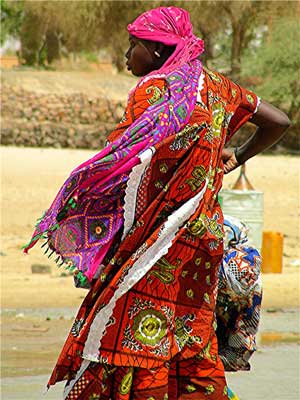
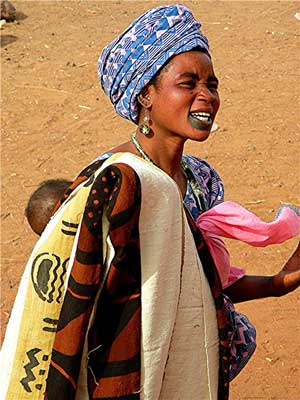

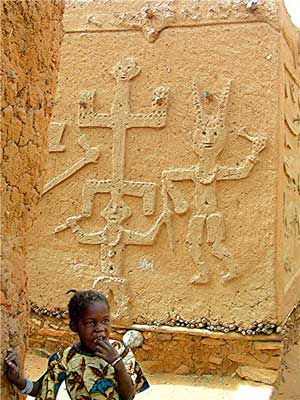
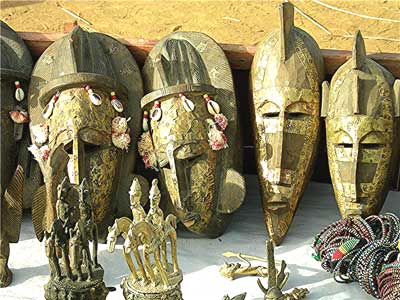
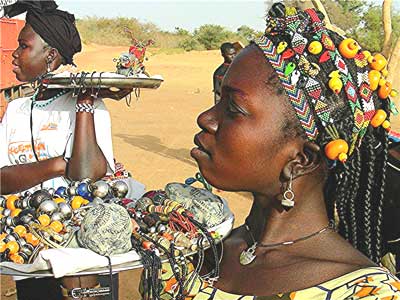
- Mali: Djenne, Vivid Colors and Timbuktu - February 28, 2024
- Pantanal, Brazil: Dozens of Magnificent Creatures - September 17, 2019
- David Rich: The Monkey on My Back to See it All - November 12, 2018


